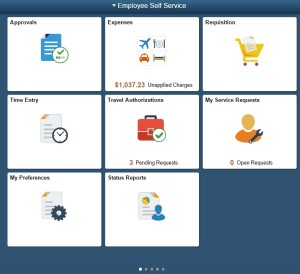One of Oracle’s primary areas of commitment and focus is to ensure PeopleSoft is mobile-device friendly and they have done this using fluid pages. Fluid pages are PeopleSoft pages that are mobile device enabled and allow for end-user self-service. Initially Oracle began deploying fluid pages primarily for the end-user and focused on more simple self-service applications. Many of the self-service needs are being addressed as images are rolled out.
The next step in the evolution of fluid pages is more complex transactions that are not only applicable to end-users but to power users. We have spoken often about the key requirement to create a selective adoption strategy, but the other key initiative that should be of importance to most organizations is a fluid strategy. In order to enable an effective fluid deployment, organizations must have a fluid strategy that is consistent, repeatable, and intuitive and will be readily and easily adopted with minimal training.
To help with the consistency of fluid pages, Oracle released the “Fluid Navigation Standards, Fluid User Experience” white paper in October 2015. (The white paper is on My Oracle support and you will need your customer id and password to access it.) It contains over 30 pages of content and covers such topics as:
- Homepages
- Navigation
- Application start pages
- Fluid and classic co-existence
- Activity guides
- Navigation collection
- Related actions
The white paper is a great starting point when looking to understand fluid and its capabilities. Remember, the tool is one aspect of fluid, but having an overall strategy that is consistent across the end user experience is just as important and a key step before designing and rolling out fluid pages.
If you would like more information on fluid, drop me a note at Sam.Sisler@miproconsulting.com.


